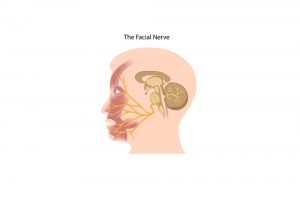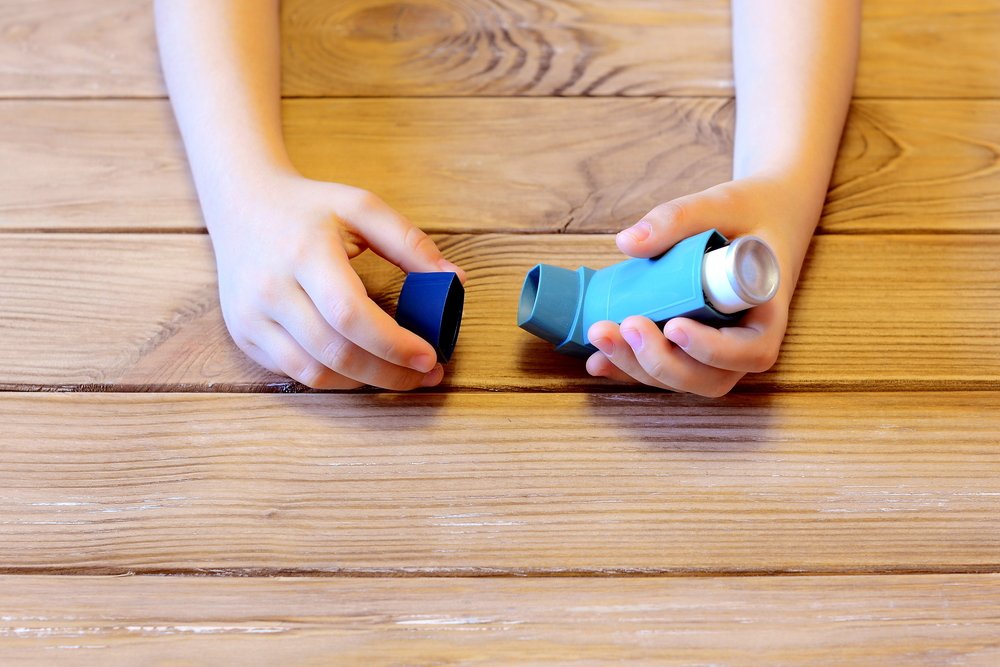Bell’s Palsy- what is it and why does it happen?
Bell’s Palsy- an overview
Bell’s Palsy is a weakness or total paralysis of the muscles on one side of the face- with difficulty smiling, raising the eyebrow, blowing out the cheek or closing the eye on the affected side. It may also be hard to pronounce certain sounds clearly, such as the letter P. Bell’s Palsy usually comes on quite quickly, over a few hours.
It occurs when the facial nerve becomes inflamed or irritated- it’s not clear why this happens, but it’s thought there may be a viral trigger. Whilst Bell’s Palsy gets better by itself in most cases, the recovery time can vary from weeks to months. Treatment with steroid tablets may help- to maximise the benefit this should be started in the first 72 hours of onset of symptoms.
Whilst Bell’s Palsy is the most common cause of one-sided facial weakness, it can be very hard to tell it apart from a stroke– so it’s essential to see a doctor urgently if you experience facial weakness.
Here are some symptoms Bell’s Palsy does NOT cause:
- weakness in the arms or legs
- difficulty finding words or understanding other people
- confusion
- bad headaches and vomiting
- visual impairment (though a dry or watery eye may occur)
If any of these symptoms occur with one-sided facial weakness, the diagnosis may be a stroke or some other serious issue- immediate medical attention is advised.
What are the other symptoms that occur with Bell’s Palsy?
- Other symptoms may include
- pain or discomfort around the ear (this may start a day or two before the paralysis begins)
- inability to close one eye fully
- inability to make tears, leading to a dry irritated eye OR the opposite problem- continuous watering of the eye
- drooping of the mouth on the affected side and drooling of saliva
- a reduced sense of taste
- increased sensitivity to sound
What causes Bell’s Palsy?
- To reach the face, the facial nerve must pass from the brain, out through a tiny opening in the skull. If the nerve is inflamed and there is swelling at this point, it may become pinched or compressed, causing it to partially or completely stop working.
- It is not completely clear what causes the facial nerve to become inflamed, but it’s thought that a virus that’s been lying dormant in the nerve after a previous infection (such as the cold sore or chicken pox virus) may “reactivate” and cause Bell’s Palsy to develop. This may happen many years after the original illness.
- If the facial nerve stops working, the muscles it controls cannot function properly.
Who gets Bell’s Palsy?
Anyone can get Ball’s Palsy (in fact it’s thought to affect around 1 in 60 people at some point in their lives). It’s more common in certain situations, including:
- after a viral illness
- in women who are pregnant or who have diabetes.
- people between 15 and 45 years old


How is Bell’s Palsy diagnosed?
The doctor will ask questions to make sure there’s nothing else going on- you may have other symptoms that suggest a more serious or unusual underlying condition. They’ll also usually perform a physical examination.
A scan of the head may be advised, to check for strokes, tumours or other problems.
What else can cause one-sided facial weakness?
Other causes of facial paralysis include:
- trauma to the head (head injury)
- stroke (in a stroke, the person may have facial weakness but still be able to raise their eyebrow, which they cannot do in Bell’s Palsy)
- tumours in the brain, ear or parotid gland
- Lyme Disease (though not in Australia)
- Sarcoidosis (this may also cause a cough, wheeze, tiredness, night sweats, rashes, swollen glands and other symptoms)
As most of these conditions are serious, it’s extremely important to immediately see a doctor if you get one-sided facial weakness.
What is the treatment for Bell’s Palsy?
Whilst Bell’s palsy tends to get better by itself in around 85% of cases, there are some treatments that may help:
- Oral steroid (cortisone) medication is often prescribed as it may reduce the severity of symptoms. It’s best if this is started with 72 hours of the first symptoms, but it may still help if used within the first week.
- It’s not clear if antiviral medications help, so they’re not routinely prescribed.
- The eye can be protected with lubricant drops and wearing glasses
How long does it take for Bell’s Palsy to get better?
- Recovery time varies from person to person
- Some people get better after 2 weeks
- 80% of cases recover within 3 months
- A minority of people do not recover fully
If you have questions or concerns regarding Bell’s Palsy, speak to your doctor.
On a vegan diet?- some important things you should know
Vegan diet- a beginner's guide What is a vegan diet? A vegan diet, also known as plant-based, describes one that avoids any animal products. There are many subtypes of [...]
How to get rid of Jock Itch
How to get rid of Jock Itch What is Jock Itch? Jock Itch is a common name for the medical condition also known as "Tinea Cruris". Jock Itch is [...]
Acid reflux- what causes GORD, and how to get rid of it
Acid reflux- what causes GORD, and how to get rid of it Acid reflux is when stomach acid flows from the stomach upwards into the oesophagus. The oesophagus (us-off-a-gus) [...]
Why request an Asthma Action Plan?
Why request an Asthma Action Plan? What is an asthma action plan? A key part of asthma management is the preparation of a written asthma action plan by the [...]
How to get rid of a UTI
How to get rid of a UTI What is a UTI? UTI stands for Urinary Tract Infection (also referred to as a bladder infection or cystitis). UTIs are common, [...]
Lower Urinary Tract Symptoms in Men
Lower Urinary Tract Symptoms in Men What are Lower Urinary Tract Symptoms? ‘Lower urinary tract symptoms’ are symptoms related to passing urine and are common in men as they get [...]








